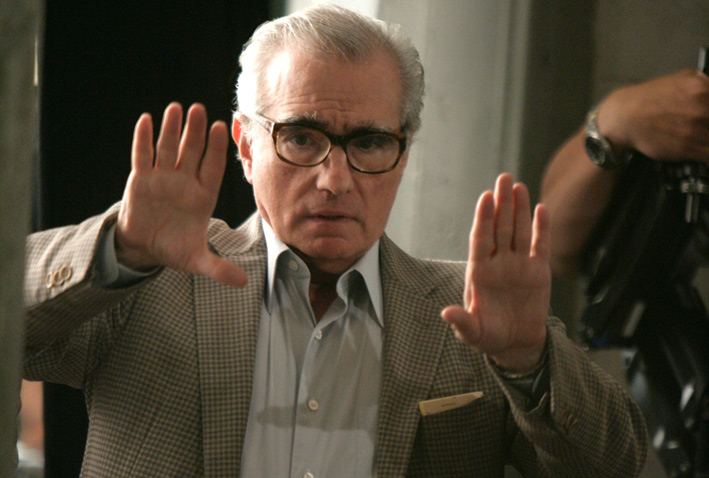 Martin Scorsese, arguably one of the greatest living filmmakers, often gets unfairly branded as a guy who mainly makes “mafia” movies. While it’s true that Scorsese’s contributions to the genre (“Mean Streets,” “Goodfellas,” “The Departed”) are nothing to scoff at, it’s also an unfair and reductive generalization. The truth is that he has contributed to more cinematic genres then you can shake a bloody baseball bat at: from lavish period dramas to rock n’ roll documentaries, religious parables and children’s fantasies.
Martin Scorsese, arguably one of the greatest living filmmakers, often gets unfairly branded as a guy who mainly makes “mafia” movies. While it’s true that Scorsese’s contributions to the genre (“Mean Streets,” “Goodfellas,” “The Departed”) are nothing to scoff at, it’s also an unfair and reductive generalization. The truth is that he has contributed to more cinematic genres then you can shake a bloody baseball bat at: from lavish period dramas to rock n’ roll documentaries, religious parables and children’s fantasies.
Scorsese also peppers all his pictures with references to films that influenced him: for instance, his underrated “Shutter Island” is deeply indebted to Samuel Fuller’s “Shock Corridor." Of all the New Hollywood filmmakers that emerged in the 1970’s —those film-literate autodidacts who studied the visual language of forebearers Howard Hawks and John Ford and then radically rebelled against that selfsame establishment— Scorsese is almost certainly the most obsessed with film. As a sickly, asthma-stricken child on the streets of New York City’s Little Italy in the 1950s, Scorsese’s greatest escape was at the local theatre, where he fell in love with the art of movie-making. The 72-year old director is also a tireless advocate for the preservation of film, and hearing him talk about the movies that changed his life —by greats like Jean Renoir, Alfred Hitchcock, Jean-Luc Godard, Federico Fellini and more— is a treat. Scorsese dove headfirst into the spectacular annals of American film history in his 1998 documentary “A Personal Journey with Martin Scorsese Through American Movies,” which examines the earliest beginnings of the art-form and how the director of any film alternately plays the role of “smuggler, illusionist and iconoloclast.” Simply put, it’s terrific.
The three-and-a-half hour picture is a consummate love letter to cinema as an art form, from its inception to the advent of serious American films by directors running the gamut from Fuller to Bob Fosse. Throughout the film, Scorsese engages with the audience directly, communicating via his trademark rapid-fire verbal style the profound impression that movies have made on his life. Although the majority of the film is comprised of pre-existing footage, he ropes in some of his longtime collaborators, including composer Elmer Bernstein (“Cape Fear”), title designer Saul Bass (“Casino”) and renowned editor Thelma Schoonmaker (editor of every Scorsese picture since “Raging Bull,” and who cut his seminal 1967 drama “Who’s That Knocking At My Door?”). There are interviews with some of his pals from his 1970’s glory days, including Steven Spielberg and Brian DePalma, both of whom know a thing or two about cribbing from the past and paying homage to the movies they were obsessed with as kids. Scorsese’s remembrance of one of the very first films he saw in a theatre, King Vidor’s western “Duel in the Sun” starring Gregory Peck, is particularly moving when you consider that it changed the way in which the young man looked at narrative storytelling (Scorsese would pay homage to this classic film later by casting Peck in his last screen role in his 1991 remake of “Cape Fear”).
Scorsese has made documentaries before, but never one as revealing as his own ‘Personal Journey.’ If anything, three and a half hours barely seems like enough time to cover such a massive, important subject as film itself. And yet it’s important for any self-professed student of film to know the history of the medium they enjoy. If you dug Paul Thomas Anderson’s “Inherent Vice,” for instance, go check out Robert Altman’s “The Long Goodbye” and Robert Downey Sr.’s “Putney Swope” to see where Anderson mined the hazy, doomed SoCal vibes and anarchic comedy as such. One can even trace Wes Anderson’s trademark style back to the delicate human comedies of Francois Truffaut, particularly “The 400 Blows,” and his newest, most acclaimed film “The Grand Budapest Hotel” pays loving tribute to the screwy, achingly romantic pictures of Ernst Lubistch.
Scorsese’s thesis, for lack of a better word, seems to be that if we study and appreciate the art of the past, it will help us in creating beautiful, sustainable art for future generations. His love for the art of film is so pure and so unrelenting: you sense that in his quest to preserve old film prints, he is protecting what he believes to be a golden age of culture that is in danger of slipping away. It’s a noble pursuit, and his work towards a deeper, more profound appreciation of the art form is nothing if not inspiring. Thanks, Marty. [The Directors Series]

